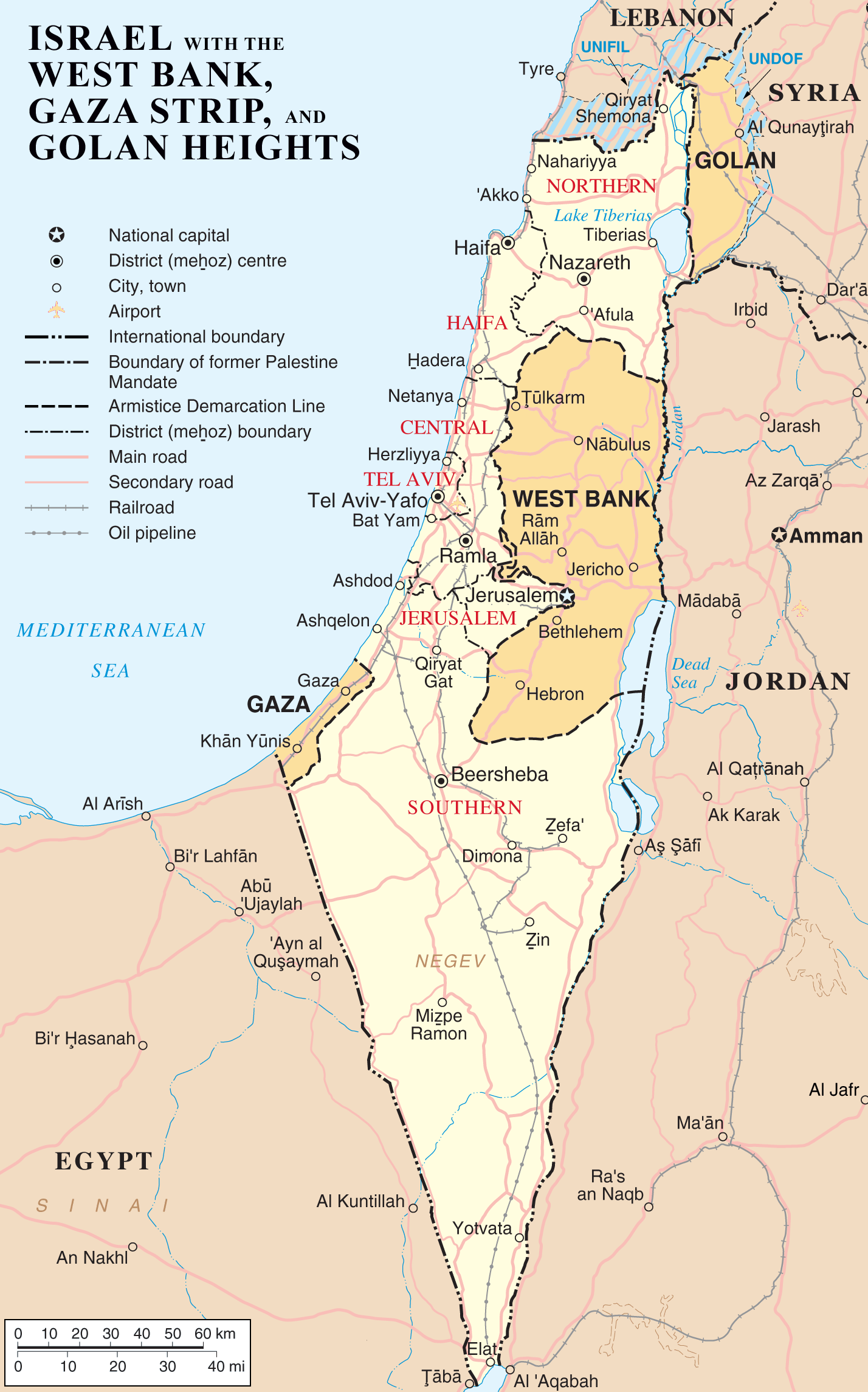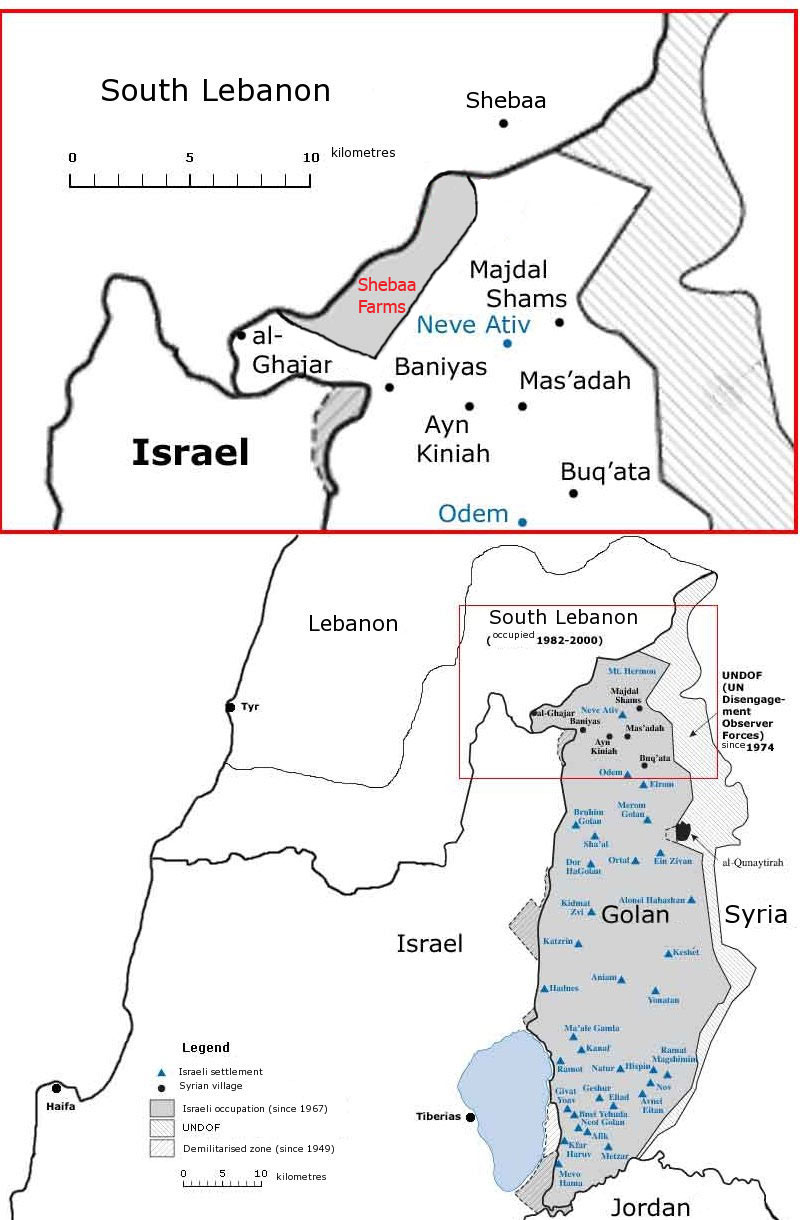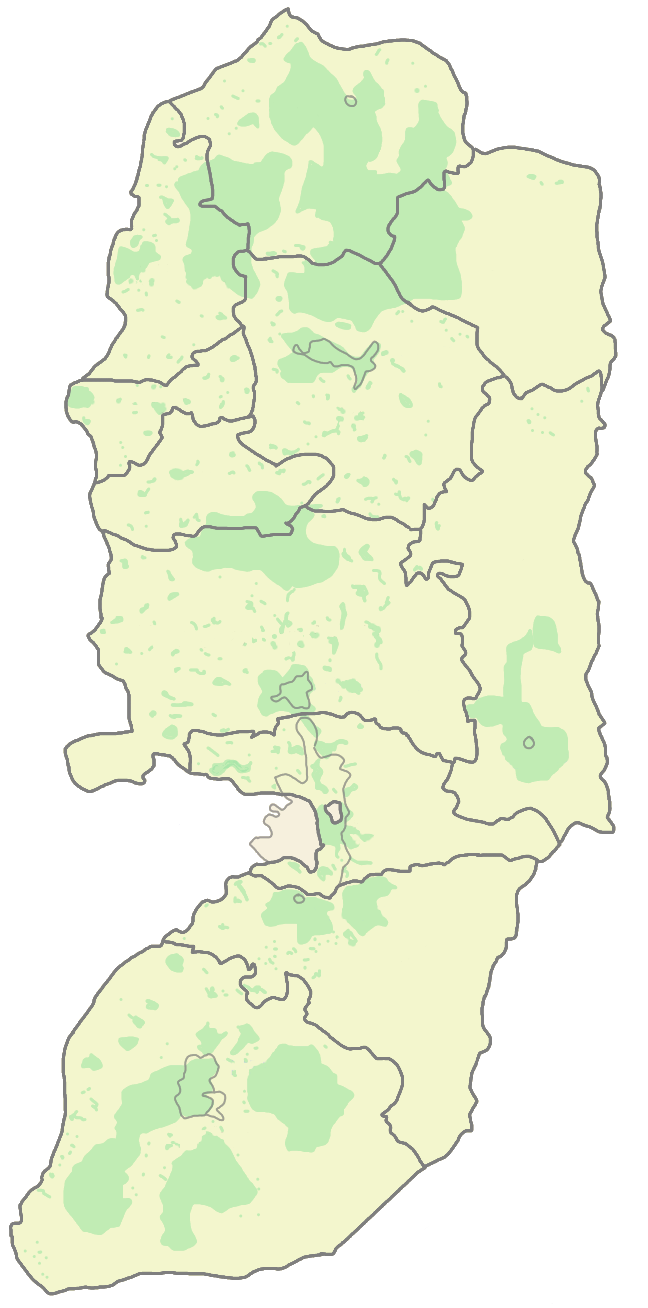The Land
 |
| Israel and surrounding area (http://upload.wikimedia.org/wikipedia/commons/1/12/Is-wb-gs-gh_v3.png) |
Land is a precious and scare resource – especially in the Middle East. Water also falls into that category – especially in the Deserts of the Middle East. This chapter will address the former and the latter will be addressed later in the book.
In order to establish a viable Palestinian state, it needs as much land as it can get. There are about 10 million Palestinians alive today (stats from 2003) and they are spread out all over the world (by comparison there are about 7 million Israelis).
In reality, there is not enough land and resources to accept 10 million people in Gaza and the West Bank. Also there is a significant number of Israelis that live in the West Bank and would need to be moved out into (the already crowded) Israel “proper”.
There is also that issue of “The Right of Return” where Palestinians want to move back to their former homes that are now in Israel.
But I’m getting ahead of myself! This chapter is about how the land needs to be divided between the different peoples.
Syria and the Golan Heights
 |
| Map of the Golan Heights and surrounding area (http://upload.wikimedia.org/wikipedia/commons/1/12/Golan_heights_rel89-orig.jpg) |
The borders of modern day Syria were set by the WW1 Allied Powers at The Treaty of Sevres (Lebanon was part of this country that was called Lebanon-Syria). Interestingly, The United States was excluded from the treaty – does that mean that it is still at war with (what was) The Ottoman Empire?
Syria is quite large geographically with an area over 185,000 sq. km. By contrast, Israel is about 22,000 sq. km. (~10% of Syria’s size) and the Golan Heights are 1800 sq. km (1200 occupied by Israel = ~1% of Syria).
Israel already has numerous settlements in the Golan Heights and would have difficulty in resettling those people if they were to leave the Golan. Israel is a small country that has needs for land to alleviate their population growth pressure.
I personally call on Syria to make the biggest sacrifice for peace in the Middle East. Syria should sell the Golan Heights to Israel.
Before you rush to judgment about that last statement – please read to the end of this section first. Remember this is only the first sacrifice for peace that I have written about (there will be many more – on both sides).
But what kind of price would you put on this land? There are many ways to come up with a number, but I believe my proposal is just. The (initial) price for the Golan Heights shall be $50,000 per square kilometer. That comes out to 600 million dollars. But that is not all. Most land deals between 2 countries (including sovereignty) are set for 99 years (there are numerous examples Hong Kong, Macau, Canal Zone, and Guantanamo). But this would not be a lease – it will be a purchase.
So Israel will pay $600 million up front and then $600 million every year (on the anniversary date of the peace treaty signing) for 99 years – for a total price of $60 billion. That seems like a decent price. NOTE: There are about 500 sq. km. (of the Golan) on the Syrian side of the border – they may want to sell that too (they wouldn’t be required to). If they wanted to sell that also, the total deal would be worth $85 billion.
In addition, all Syrian citizens living in the Golan Heights today will become (full) Israeli citizens. And all of the Syrians that left the Golan will be compensated by the Syrian government using part of the sale proceeds. Any Syrian that wanted to return to the Golan would need to submit to an Israeli emigration process.
I believe that this process would result in a satisfactory outcome for all parties. But it is a compromise – for peace. Israel needs the land in order to withdraw from the West Bank – so Syria will be helping the Palestinians with this (very significant) concession.
Lebanon and the Shebaa Farms
 | |
| Map of Shebaa Farms (http://upload.wikimedia.org/wikipedia/commons/2/2d/Shebaa_Farms.jpg) |
Lebanon lays claim to a small parcel of land called Shebaa Farms that is located within the Israeli–controlled Golan Heights. The area of Shebaa was never properly demarcated by the French mandate of Lebanon-Syria which is why it is in dispute today.
Most of the maps of this area in 1967 show this area to be Syrian territory, which is what Israel and the USA contend. In any event, it amounts to 22 sq. km. of area which is quite small, but the area includes heights overlooking southern Lebanon and Israel to the west – so it is strategic.
I propose that Israel pays Lebanon in the same way as Syria ($50000 per sq. km. for 99 years) to purchase the land. This is a small yet significant compromise for peace.
The West Bank and the Gaza Strip (except Jerusalem)
 |
| The West Bank of the Jordan River (http://upload.wikimedia.org/wikipedia/commons/8/8d/WestBankGovernatesNonLabeled.png) |
This may look like quite a bit of pain for Israel as there are many settlements in this area, but they withdrew in Gaza and now they can do it in the West Bank. But remember, Israel gets to keep the Golan Heights so there will (hopefully) be room to move those settlements.
Instead of the total withdrawal that Israel accomplished in Gaza, the withdrawal from the West Bank must be made in stages. This will be to try and prevent the destruction of viable housing and farms that followed the Gaza withdrawal.
The biggest issue - Jerusalem
There is no
bigger issue than the future status of Jerusalem.
The Palestinians want to make their capital in East Jerusalem, but the Israelis remember
those “bad old days” where they were prevented from visiting their holy sites –
and had snipers taking potshots at them from the East side. No Israeli is
willing to return to the former status quo.
I think
everyone understands that the future of Jerusalem
will involve many negotiations and take time – and would unnecessarily drag out
the overall peace process, so the solution for Jerusalem must be separate from the rest of
the peace process.
In the
meantime, there will be a temporary status for Jerusalem. Here is what I propose:
The city of Jerusalem will be
declared a UN mandate and controlled by the UN for a period of 99 years. The UN
will be charged with protection of citizens, property and religious freedom.
In this way Jerusalem can be used as a capital for both Israel and Palestine,
and neither side could pressure the other in any way (other than
diplomatically!).
For Israel to
cede control of Jerusalem, they must be fully confident in the country that will
lead the UN mandate. Ideally that would be the United States. Israel would probably agree to the USA being in
charge. But the Palestinians might not be comfortable with that arrangement –
and they shouldn’t be forced into accepting it.
I have
another country in mind – keep reading and see if you would accept my proposal.
Remember compromise is the way to lasting peace.

No comments:
Post a Comment